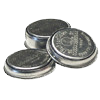When it comes to setting up a server room in your office, not every company has the money to go out and buy top-of-the-line equipment. In some cases, a server room could consist of a computer with an eight port router/switch/modem combo.
There are ways to make this work, but too many of your staff & colleagues have been screwing around with the cables and other equipment, so now nobody seems to know who's plugged into which port.
Imagine this same dilemma with a 50+ port system. That same switch looks like a pasta maker, and the tangled mess that was your data cables, now looks more like spaghetti!
So what's the answer? - Well it may surprise you to know that a small amount of organisation can go a long way. If you have a small company, rather than spending thousands of dollars on switches and IT people, just think a bit laterally.
- Use colour coded cables - Blue for computers, Purple for telephone lines, etc.
- Install a small server cabinet that can be locked - This way you can monitor and control access to the equipment and cabling.
- Purchase equipment that you will need next year, not today - If you have four staff members and you are a growing business, buy an eight port switch to prepare for future staff.
Just remember; every step you take to make your business function a little smoother today will pay dividends down the track. It also lets your staff focus on the important stuff, like growing your company.








